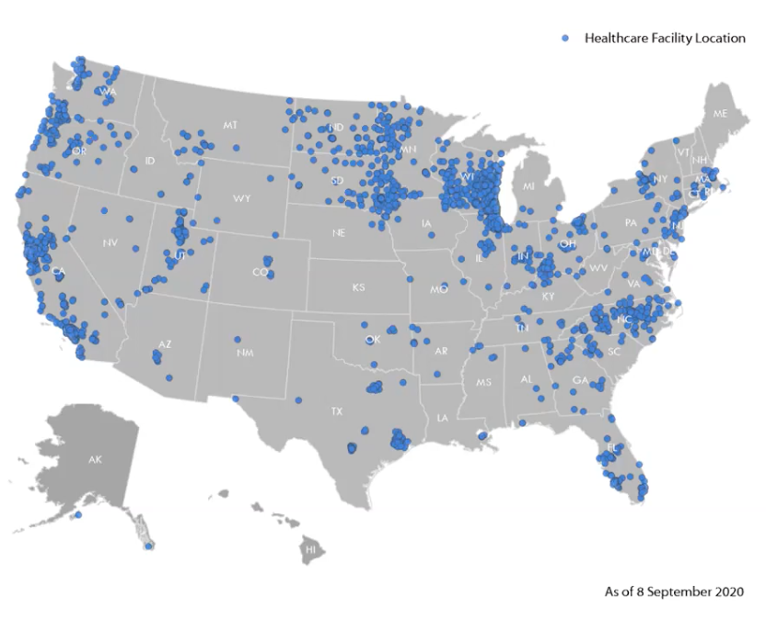Did you know the majority of infectious disease case reports are manually filled out and sent via a machine that was invented in 1843?
It may sound outrageous, but it’s true.
Even amidst a global pandemic in 2020, most health agencies handle their case reports by filling out a paper form and faxing it to the Center for Disease Control (CDC) and various other state and local agencies. Harris County in Houston, for example, received a staggering 40,000 COVID case reports by fax earlier this year.
Not only does this method of communication leave us susceptible to inaccuracies and misinformation, but the time and cost burdens on healthcare providers and health agencies is immense.
With today’s increased importance on efficient and accurate reporting of COVID-19 and other infectious diseases, the stakes are simply too high to remain dependent on antiquated technology.
In a recent webinar, our founder and CEO, Linda Van Horn, was joined by John W. Loonsk, MD FACMI, Adjunct Associate Professor at Johns Hopkins Bloomberg School of Public Health to show you how automating COVID-19 case reporting can help alleviate the strain on your hospital.
Why Electronic Case Reporting (eCR) is the Solution
In essence, eCR automates reporting of COVID and other infectious diseases by electronically sending case reports using data that already exist in an electronic health record (EHR) and routing it to the appropriate public health agencies.
Every state has laws that mandates the conditions that are required to be reported by providers to state and local health agencies. Even so, as few as 1 in 10 reportable conditions are actually being reported, and it’s not hard to understand why. With everything going on today, providers and public health personnel just don’t have the time to manually enter all the data. But that doesn’t stop the legal requirement to report. Further, the core activity of case reporting is more paramount than ever to help protect the public’s well-being and the public health infrastructure in this country.
With a vast array of benefits for both the provider and the health agency, eCR has the capability to change everything.
Benefits of eCR to Provider
Without disrupting the clinical workflow, eCR reduces provider burden by:
- Fulfilling legal reporting requirements
- Connecting with public health agency in real time
- Eliminating the need for manual data entry and faxing reports
- Reducing response to calls from public health agencies
- Streamlining jurisdiction reporting challenges
- Offering credit through the Promoting Interoperability Program
- Immediately improving COVID-19 reporting and allows expansion to all reportable conditions
- Allowing public health agencies to send information back to healthcare
Benefits of eCR to Health Agencies
With more complete data from automated case reports, eCR enables helps public health agencies to better response by:
- Allowing bi-directional data exchange between public health and healthcare providers
- Improving reporting of clinical data of contact information for contact tracing and case management
- Reducing the need for follow-up investigation
- Accelerating response time with automated data for public health action
- Monitoring the spread of reportable diseases like COVID-19
- Improving communication and collaboration with healthcare providers
The Time is Now
eCR Now is an initiative by the CDC to operationalize electronic case reporting nationwide that was just beginning to ramp up when the pandemic hit. As COVID-19 cases soared it quickly became a reportable condition, it was clear that the time is now to swiftly move forward by implementing eCR Now.
eCR Now for COVID includes critical data for outbreak management.
- Patient identity and demographics
- Co-morbidities
- Race and ethnicity
- Occupation
- Pregnancy status
- Other clinical data
You might think that a public health emergency would be the worst time to move a program like eCR Now forward, but the timing for this critical nationwide initiative couldn’t be better, really. Now is when attention is focused on public health. Now is when resources are available. Now is when individual jurisdictions make unique data asks. And now is when providers need to finally move on from manual reporting!
eCR Now is begin rapidly deployed. As of August 27, 5,400+ facilities are reporting COVID-19 cases using eCR, and 1.85 million reports have been sent to 55 public health agencies (out of 59).

Graphic courtesy of John W. Loonsk, MD, FACMI webinar slides.
Ready to Implement eCR Now?
Getting up and running with eCR Now is easier than you might think. We’re here to help. Learn more about eCR and COVID-19 reporting with iShare Medical.
This article provided a recap of the recent webinar Automating COVID-19 Case Reporting: How to Ease the Burden on Your Hospital. Led by the incomparable John W. Loonsk, MD, FACMI the insights and information he shares in his full presentation go even deeper into the benefits of eCR Now and how you can begin your implementation.
>> Request the eCR Webinar Recording Here
Not only is Dr. Loonsk, MD FACMI Adjunct Associate Professor at the Johns Hopkins Bloomberg School of Public Health and Chief Medical and Informatics Officer for the Association of Public Laboratories — but he is also also a noted authority in both infectious disease, public health, and in specifically in the electronic case reporting!
![iShareLogo-CircR-NoBG-150px[1] iShareLogo-CircR-NoBG-150px[1]](https://blog.isharemedical.com/hs-fs/hubfs/iShareLogo-CircR-NoBG-150px%5B1%5D.png?width=331&height=150&name=iShareLogo-CircR-NoBG-150px%5B1%5D.png)

